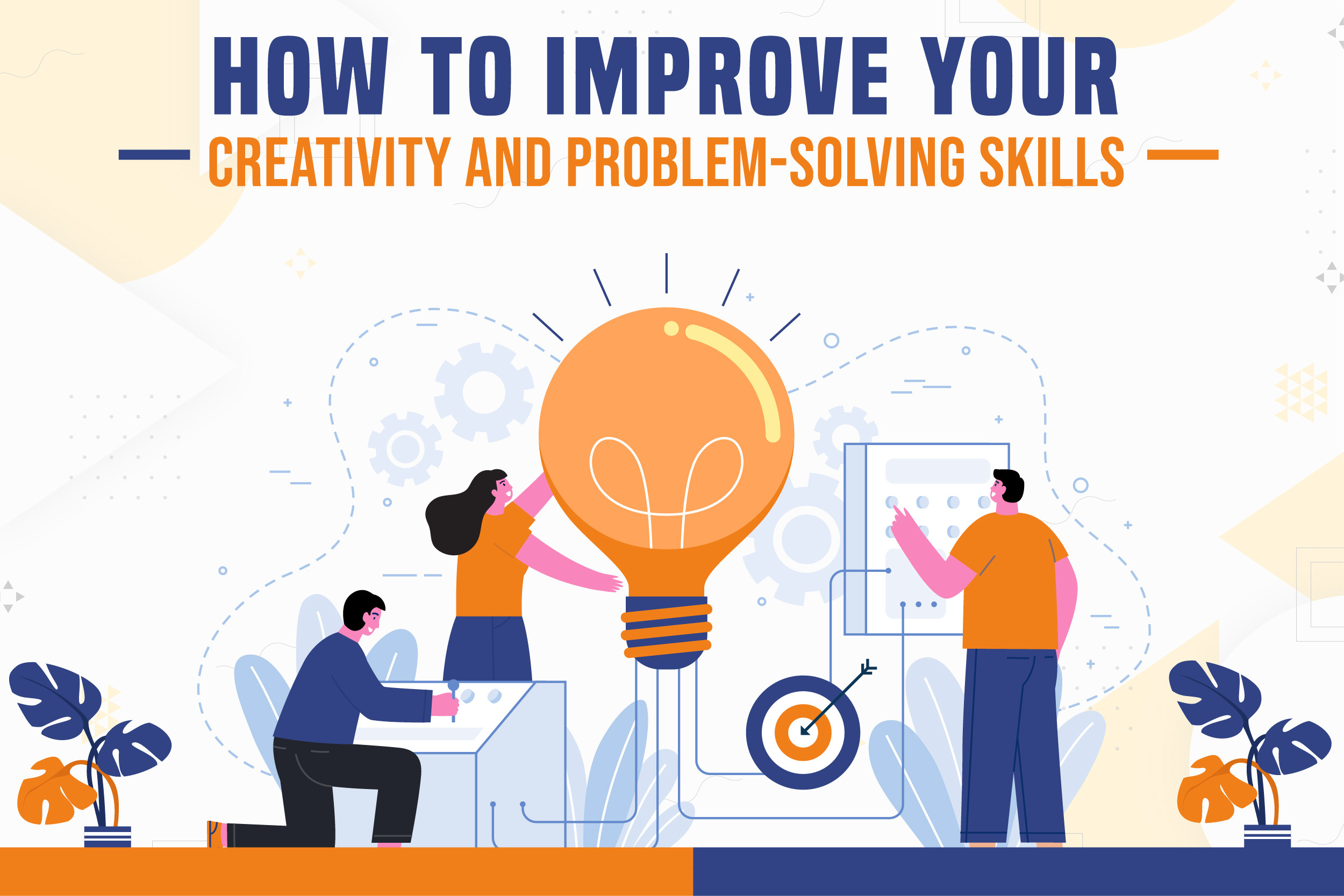
How To Improve Your Creativity And Problem-Solving Skills?
A creative workforce is what every company dreams of. Do you know why? Because creativity is synonymous with problem-solving; the most crucial skill that organizations desire to have in their team. If you have a creative and problem-solving team then nothing can impede the success of your company. Modern-day problems need innovation-based problem-solving processes. Let’s delve into a little detail to comprehend the process and its importance in the present day.
About Creative Problem Solving
It might be annoying to run across issues that are unclear in their origin. This happens when there is controversy about a clearly defined issue or when research produces ambiguous findings. Despite the absence of clarity in these instances, creative problem-solving aids in the development of solutions.
Though less organized than other types of invention, creative problem-solving facilitates the exploration of unbounded ideas and shifting viewpoints, which promotes creativity and makes workplace adaption simpler. Additionally, it functions best when combined with other innovation-based techniques like design thinking.
How Are Creative Problem Solving And Design Thinking Complementary To Each Other
A solutions-based mindset known as "design thinking" promotes creativity and problem-solving. It also encourages successful Leadership Development. The Harvard Business School Dean Srikant Datar's four-stage iterative method is what drives it.
Stages Of Design Thinking
1. Clarify
In this phase, an issue is investigated through empathetic observation and insights.
2. Ideate
According to the findings during the clarifying stage, this stage concentrates on coming up with ideas and posing open-ended inquiries.
3. Develop
Finding potential solutions using the concepts you come up with is part of the development stage. Here prototyping and experimentation, are promoted.
4. Implementation
The first three stages come together in the last one. It entails completing the creation of a solution and explaining its importance to stakeholders.
Despite being a critical initial step in the design thinking procedure, user research occasionally fails to pinpoint the true source of an issue. This issue is addressed by encouraging the growth of fresh viewpoints through creative problem-solving.
Your ability to solve problems may be improved by using skills like design thinking and creativity at work. These skills can be obtained by taking a good Leadership Management Course that includes creative and design thinking. Let’s have a look at the following pointers below to help you out.
Creative Problem-Solving Ideas
1. Empathy Is What Your Customers Seek
Empathy is a key component of the clarifying stage of design thinking. By following and knowing your people and asking questions, you can obtain an idea of your target audience and use that knowledge to discover innovative and pertinent solutions to their problems.
And empathy can be practiced by getting into the shoes of your customers, observing their issues closely, and refraining from making personal comparisons. The success of your solutions depends on how clear is your understanding of your target audience.
2. Retain Idea Judgment
You would naturally dismiss an idea if you came across one that seemed absurd or irrational. This quick judgment limits original thought. Even improbable ideas may be quite important for brainstorming. It's crucial to encourage the investigation of novel concepts.
Although passing judgment could be viewed negatively, it's crucial to refrain from embracing concepts too hastily. Even if you really like an idea, wait before pursuing it. Rather than acting on ideas right away, give each proposal equal attention and make decisions based on many ideas. The effectiveness of your decision would also highlight your true Leadership Development.
3. Combat Cognitive Fixation
Rather than viewing every circumstance via the prism of previous experiences, cognitive fixedness is a mental condition that hinders you from seeing a situation's alternate answers or perspectives.
Cognitive fixedness hinders creative thinking since it keeps you from addressing circumstances objectively, despite being effective in the short term. In order to prevent this inclination, it's critical to be conscious of it.
4. Convergent And Divergent Thinking Should Coexist
Striking a balance of divergent and convergent thinking is one of the fundamental tenets of creative problem-solving. The act of brainstorming different ideas without constraints is known as divergent thinking; unrestricted creativity is promoted. Though it's a useful tool for idea generation, not all of the concepts can be pursued. Eventually, divergent thinking must be anchored in reality.
Conversely, convergent thinking is the act of condensing thoughts into a small number of possibilities. Though too much rapid convergence suppresses creativity, it's an essential phase in bridging ideation and growth. To enable the ideation and development of new ideas, it's crucial to find a balance between the two.
5. Positivity In Language
When addressing problems, it's critical to have a good attitude and refrain from using terms that limit creativity. Quick judgments are avoided, and cognitive fixation is overcome, through positive words. Hence, make use of phrases like "yes, and" rather than "no, but."
Instead of shutting off people, positive language helps them feel heard and respected. This method involves approaching each topic from a positive angle rather than having to agree with them all.
Endnote
Some people are inherently creative, but for many people, it takes practice. No matter whatever category you fall into, working to increase your capacity for innovation is worthwhile. Taking an innovation-based course may improve your problem-solving, whether your goal is to foster your creativity or broaden your professional skill set.
